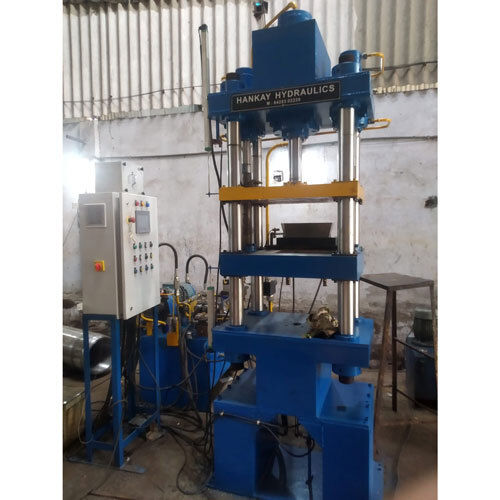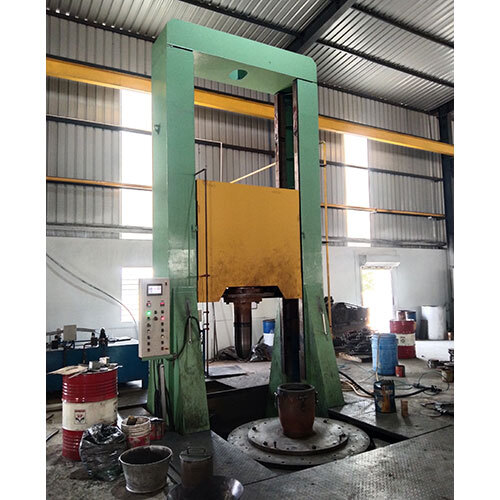Floating Cavity Ceramic Press
Product Details:
- Size 800*1000*3000
- Product Type Floating Cavity Ceramic Press
- Height 3000 Millimeter (mm)
- Usage For Making High Alumina Tile and other complex parts
- Width 1000 Millimeter (mm)
- Length 800 Millimeter (mm)
- Color Blue,orange,cream,grey,black,yellow,green
- Click to View more
Floating Cavity Ceramic Press Price And Quantity
- 800000 INR/Unit
- 5 Unit
Floating Cavity Ceramic Press Product Specifications
- 1000 Kilograms (kg)
- 220-440 Volt (v)
- Other
- 0-200 mm/s
- 1 Year
- Mild Steel Fabricated
- Blue,orange,cream,grey,black,yellow,green
- Hydraulic
- 800 Millimeter (mm)
- For Making High Alumina Tile and other complex parts
- 1000 Millimeter (mm)
- Steel
- 3000 Millimeter (mm)
- Floating Cavity Ceramic Press
- 800*1000*3000
Floating Cavity Ceramic Press Trade Information
- 5 Unit Per Month
- 30 Days
- All India
Product Description
A floating cavity ceramic press is a specialized type of hydraulic press used for efficiently and uniformly producing highquality ceramic parts It offers several advantages over traditional ceramic presses making it a valuable tool in various manufacturing applications The Working Principle Imagine a conventional press where the force is applied directly to the ceramic powder potentially leading to uneven density and pressure distribution In a floating cavity press things are different Die with Independent Cavities The press features a die with multiple individual cavities where the ceramic powder is filled Uniform Pressure Distribution When the press applies pressure the fluid evenly distributes the force across all cavities regardless of the amount of powder in each This floating mechanism ensures consistent pressure and density throughout the pressed parts minimizing variations and defects Benefits of Floating Cavity Ceramic Presses Uniform Density and Quality Consistent pressure leads to uniform density within each part and across the entire production batch improving product quality and performance Reduced Rejects Lower risk of defects due to uneven pressure minimizing rejected parts and material waste Increased Efficiency Faster cycle times due to simultaneous pressing of multiple cavities in one press stroke Versatility Can handle various ceramic powders and produce parts with complex shapes and intricate details Applications Building and Construction Manufacturing tiles bricks pavers and other architectural ceramics Electronics Producing ceramic substrates for electronic components and circuit boards Automotive Industry Fabricating ceramic parts for engines exhaust systems and brakes Aerospace Industry Creating lightweight and highstrength ceramic components for aircraft Medical Devices Crafting biocompatible ceramic implants and prosthetics Choosing the Right Press Several factors influence choosing the right floating cavity ceramic press Production Volume Highvolume operations might require larger presses with multiple cavities Part Size and Complexity Complex or larger parts may necessitate presses with higher tonnage capacity Material Type Different ceramic powders may require specific pressure and temperature profiles Budget Consider the initial investment and ongoing maintenance costs The Future of Floating Cavity Pressing This technology continues to evolve with advancements in Automation Increased automation for enhanced efficiency and reduced manual labor Advanced Materials Development of new ceramic materials with superior properties for wider applications Sustainability Exploration of ecofriendly practices for energy consumption and waste reduction Conclusion The floating cavity ceramic press stands as a testament to innovative engineering shaping highquality ceramic parts with remarkable consistency and efficiency Its impact extends across diverse industries from building materials to cuttingedge technologies shaping the future one pressed ceramic part at a time

Price:
- 50
- 100
- 200
- 250
- 500
- 1000+







